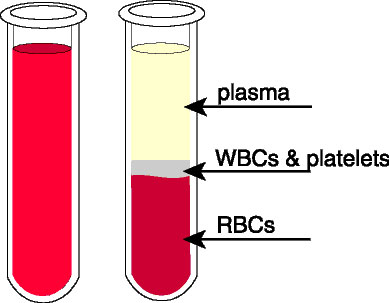Call Us Toll Free (866)237-8664
- Whole Blood - Blood flowing freely through the human body. If it is outside the body and with an anticoagulant and not separated into the liquid portion & the cells, it is still called whole blood. Example: a CBC requires EDTA whole blood.
- Serum - Blood outside of the human body is designed to clot. This natural function prevents bleeding. If blood is drawn into a tube without anticoagulant: plain red or SST, then the blood will clot naturally and separate into liquid and cells. This liquid is called serum. It is the fluid portion of a blood clot. It does not contain fibrinogen, therefore coagulation tests cannot be performed because the coagulation factors (fibrinogen) have been used in the process of clot formation.
- Plasma - If anticoagulants are added to the tube: EDTA, Sodium citrate, heparin, etc., the blood will not clot. Blood outside the body with anticoagulant is referred to as whole blood. Whole blood can still be separated into liquid and cells. This liquid is called plasma. It is the liquid portion of blood when the tube contains anticoagulant. The use of an anticoagulant preserves the fibrinogens in the plasma, so it may be used in a coagulation test.

Top
- Follows us on
-

-



